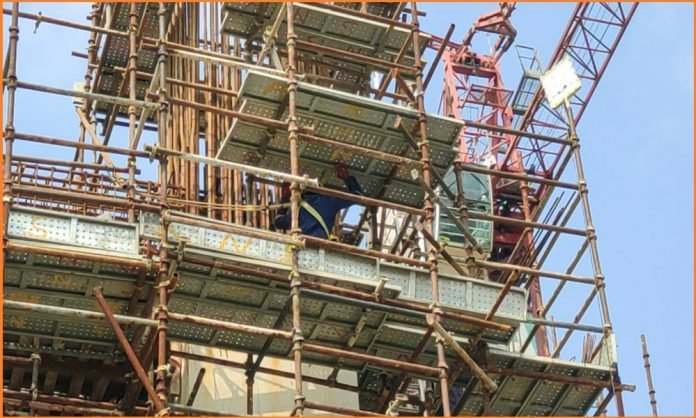Scaffolding, a temporary structure erected to support workers and materials during the construction, maintenance, or repair of buildings and other structures in construction work, plays a very important role in ensuring the safety and efficiency of construction projects. With construction being a global industry, the need for standardized scaffolding practices is imperative to importance of the safety of workers, the quality of structures, and the overall success of projects. This article explores scaffolding standards around the world, highlighting the importance of uniformity in construction practices.
Contents
Why Standardization is Important:
- Safety First: Standardized scaffolding practices prioritize the safety of workers. Accidents related to scaffolding can lead to severe injuries or even fatalities. Establishing universal safety guidelines ensures that workers and contractors adhere to a set of rules that mitigate the risks associated with working at heights.
- Quality Assurance: Standardized scaffolding also contributes to the overall quality of construction projects. Adhering to specific standards ensures that scaffolding structures are designed, erected, and dismantled in a consistent manner, minimizing errors and defects. This, in turn, leads to the construction of safer and more durable buildings.
- Global Collaboration: In an era of international collaboration, standardization facilitates seamless cooperation between construction companies, contractors, and workers across borders. Having a common set of scaffolding standards ensures that practices are easily transferable, allowing for a smoother exchange of expertise and resources on a global scale.
Scaffolding Standards in Key Regions:
- Europe: The European Union has established the European Standard EN 12811 for temporary works equipment, including scaffolding. This standard provides guidelines on materials, design, and erection processes. Additionally, the EU member states often adopt the European standard, creating a harmonized approach to scaffolding across the continent.
- British Standard BS EN 12811-1:2003 – Temporary works equipment – Part 1: Scaffolds – Performance requirements and general design: This standard, adopted from the European standard EN 12811-1, provides comprehensive guidelines for the performance requirements and general design of scaffolds. It covers aspects such as materials, structural design, dimensions, and assembly methods. Compliance with this standard ensures that scaffolding structures meet established safety and performance criteria. BS 5973:2013 – Code of practice for access and working scaffolds and special scaffold structures in steel: BS 5973 provides a code of practice for the design, construction, and use of various types of scaffolding structures, with a particular focus on steel scaffolding. It includes guidance on planning, materials, erection, inspection, and dismantling of scaffolds, emphasizing safety and efficiency. BS 1139-6:2014 – Metal scaffolding. Prefabricated systems components: This standard specifies requirements for prefabricated components used in metal scaffolding systems. It covers materials, dimensions, and tolerances for items such as tubes, couplers, and fittings commonly used in scaffolding construction. BS 8610:2017 – non-domestic fixed ladders. Code of practice: While not specific to scaffolding, this standard provides guidance on the design, installation, and maintenance of fixed ladders, including those used in an industrial or commercial context. Safe access to scaffolding structures often involves the use of ladders, so this standard is relevant to the overall safety of scaffolding operations.
- United States: In the United States, the Occupational Safety and Health Administration (OSHA) sets the standards for scaffolding safety. OSHA’s regulations cover various aspects of scaffolding, from design and construction to training requirements for workers. Compliance with these regulations is mandatory for construction projects in the U.S.
- Asia: Different countries in Asia may have their own scaffolding standards. For example, in Singapore, the Ministry of Manpower (MOM) issues guidelines on the design, erection, use, and inspection of scaffolding. India BIS (Bureau of Indian Standards) standard with the number “BIS 3696” Standardization in Asia varies, with some countries adopting international standards and others developing their own guidelines based on regional needs.
- Australia: The Australian/New Zealand Standard AS/NZS 1576 series provides guidelines for scaffolding in Australia and New Zealand. This standard covers the performance requirements for scaffolding materials, design, and erection. Compliance with these standards is essential for ensuring safety and quality in construction projects in the region.
Challenges in Achieving Global Standardization:
While efforts have been made to standardize scaffolding practices globally, challenges still exist. These challenges include:
- Differing Local Regulations: Local regulations and building codes can vary significantly, making it challenging to implement a one-size-fits-all approach to scaffolding standards. Harmonizing these regulations is a complex task that requires collaboration between governments, regulatory bodies, and industry stakeholders.
- Technological Advancements: The rapid evolution of construction technologies may outpace the development of international standards. Keeping standards up-to-date with emerging technologies is crucial to ensuring that scaffolding practices remain effective and safe.
- Cultural and Economic Variances: Different regions may have unique cultural and economic factors that influence construction practices. Understanding and accommodating these variations is essential for the successful implementation of global scaffolding standards.
The establishment of scaffolding standards worldwide is a critical step towards ensuring the safety and quality of construction projects on a global scale. While challenges exist, ongoing collaboration between regulatory bodies, industry experts, and construction professionals can help overcome these hurdles. Standardization not only protects the lives of workers but also contributes to the overall success and sustainability of the construction industry. As the world continues to evolve, so too must our commitment to creating and upholding universally accepted scaffolding standards.





